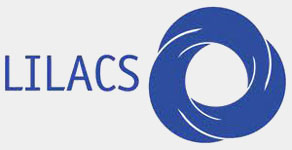BACKGROUND:
Surgical resection represents the main treatment for resectable nonmetastatic gastric gastrointestinal stromal tumors. Despite the feasibility and safety of laparoscopic resection, its standard use in gastric tumors larger than 5 cm is yet to be established.
AIMS:
This study aimed to compare the current evidence on laparoscopic resection with the classical open surgical approach in terms of perioperative, postoperative, and oncological outcomes.
METHODS:
The PubMed, Scopus, and Web of Science databases were consulted. Articles comparing the approach to gastric gastric gastrointestinal stromal tumors larger than 5 cm by open and laparoscopic surgery were eligible. A post hoc subgroup analysis based on the extent of the surgery was performed to evaluate the operative time, blood loss, and length of hospital stay.
RESULTS:
A total of nine studies met the eligibility criteria. In the study, 246 patients undergoing laparoscopic surgery and 301 patients undergoing open surgery were included. The laparoscopic approach had statistically significant lower intraoperative blood loss (p=0.01) and time to oral intake (p<0.01), time to first flatus (p<0.01), and length of hospital stay (0.01), compared to the open surgery approach. No significant differences were found when operative time (0.25), postoperative complications (0.08), R0 resection (0.76), and recurrence rate (0.09) were evaluated. The comparative subgroup analysis between studies could not explain the substantial heterogeneity obtained in the respective outcomes.
CONCLUSION:
The laparoscopic approach in gastric gastrointestinal stromal tumors larger than 5 cm compared to the open surgical approach is a technically safe and feasible surgical method with similar oncological results.
BACKGROUND:
Patients undergoing Crohn’s disease (CD) surgery may develop a higher rate of postoperative complications (POC) than other patients.
AIMS:
The aim of this study was to investigate factors determining POC in patients with CD undergoing urgent laparotomy.
METHODS:
This is a retrospective cohort study conducted on adult patients undergoing urgent laparotomy for CD. Clinical and surgical variables, medication history, American Society of Anesthesiologists classification, and POC were investigated. Data collection and management were carried out using the REDCap software (REDCap electronic data capture tools) hosted at the hospital institution. For statistical analysis, the χ2 (or Fisher’s exact) test, Student’s t-test, Mann-Whitney test, and simple and multiple multilevel logistic regression analyses were used.
RESULTS:
There was an association regarding the history of adalimumab use (p=0.04, OR 2.8, 95%CI 1.03-7.65), previous use of prednisone (p<0.01, OR 2.03, 95%CI 2.00-2.05), urgent surgery indications (p<0.01, OR=4.32, 95% CI=1.58-11.82), mechanical anastomosis (p=0.02, OR=0.22, 95%CI 0.06-0.80), unexpected intraoperative findings (p=0.02, OR 10.46, 95%CI 1.50-72.99), length of hospital stay greater than 10 days (p<0.01, OR 16.86, 95%CI 2.99-94.96), unplanned intensive care unit (ICU) admission (p=0.01, OR 15.06, 95%CI 1.96-115.70), and planned ICU admission (p<0.01, OR 18.46, 95%CI 3.60-94.51). On multivariate analysis, there was an association between the indication of urgent surgery (or emergency) (p=0.01, OR 4.38, 95%CI 1.43-13.37) and unexpected intraoperative findings (p=0.03, OR 8.11, 95%CI 1.21-54.50).
CONCLUSIONS:
Unexpected changes and urgent surgical indications are considered risk factors for POC in patients with CD.
ABSTRACT
BACKGROUND:
Adhesive small bowel obstruction is one of the most common causes of surgical emergencies, representing about 15% of hospital admissions. Defining the need and timing of surgical intervention still remains a challenge.
AIMS:
To report the experience of using meglumine-based water-soluble contrast in a tertiary hospital in southern Brazil, comparing with the world literature.
METHODS:
Patients suspected of having adhesive small bowel obstruction, according to their clinical conditions, underwent an established protocol, consisting of the administration of water-soluble contrast, followed by plain abdominal radiograph within 12 hours and by a new clinical evaluation. The protocol was initiated after starting conservative management, including fasting and placement of a nasogastric tube, as well as intravenous fluid reposition.
RESULTS:
A total of 126 patients were submitted to the protocol. The water-soluble contrast test sensitivity and specificity after the first radiograph were 94.6 and 91.0%, respectively; after the second radiograph, these values were 92.3 and 100%. The general test values for sensitivity and specificity were 91.9 and 100%, respectively.
CONCLUSIONS:
The measure parameters evaluated in this study were similar to those found in the literature, contributing to endorse the importance of this test in the evaluation of patients with adhesive small bowel obstruction. The particular relevance of this study was the similar results that were found using a different type of meglumine-based contrast, which is available in Brazil.
HEADINGS
Intestinal Obstruction; Contrast Media; Laparotomy
BACKGROUND:
Laparoscopic appendectomy is the gold standard surgical procedure currently performed for acute appendicitis. The conversion rate is one of the main factors used to measure laparoscopic competence, being important to avoid wasting time in a laparoscopic procedure and proceed directly to open surgery.
AIMS:
To identify the main preoperative parameters associated with a higher risk of conversion in order to determine the surgical method indicated for each patient.
METHODS:
Retrospective study of patients admitted with acute appendicitis who underwent laparoscopic appendectomy. A total of 725 patients were included, of which 121 (16.7%) were converted to laparotomy.
RESULTS:
The significant factors that predicted conversion, identified by univariate and multivariate analysis, were: the presence of comorbidities (OR 3.1; 95%CI; p<0.029), appendicular perforation (OR 5.1; 95%CI; p<0.003), retrocecal appendix (OR 5.0; 95%CI; p<0.004), gangrenous appendix, presence of appendicular abscess (OR 3.6; 95%CI; p<0.023) and the presence of difficult dissection (OR 9.2; 95%CI; p<0.008).
CONCLUSIONS:
Laparoscopic appendectomy is a safe procedure to treat acute appendicitis. It is a minimally invasive surgery and has many advantages. Preoperatively, it is possible to identify predictive factors for conversion to laparotomy, and the ability to identify these reasons can aid surgeons in selecting patients who would benefit from a primary open appendectomy.
BACKGROUND:
Despite its increasing popularity, laparoscopy is not the option for bariatric surgeries performed in the Brazilian public health system.
AIMS:
To compare laparotomy and laparoscopic access in bariatric surgery, considering aspects such as morbidity, mortality, costs, and length of stay.
METHODS:
The study included 80 patients who were randomly assigned to perform a Roux-en-Y gastric bypass. They were equally divided in two groups, laparoscopic and laparotomy. The results obtained in the postoperative period were evaluated and compared according to the Ministry of Health protocol, and later, in their outpatient returns.
RESULTS:
The surgical time was similar in both groups (p=0.240). The costs of laparoscopic surgery proved to be higher, mainly due to staplers and staples. The patients included in the laparotomy group presented higher rates of severe complications, such as incisional hernia (p<0.001). Costs related to social security and management of postoperative complications were higher in the open surgery group (R$ 1,876.00 vs R$ 34,268.91).
CONCLUSIONS:
The costs related to social security and treatment of complications were substantially lower in laparoscopic access when compared to laparotomy. However, considering the operative procedure itself, the laparotomy remained cheaper. Finally, the length of stay, the rate of complications, and return to labor had more favorable results in the laparoscopic route.
Background:
Until the early 1980s, Stamm technique was considered standard method to gastrostomy. After description of the endoscopic technique, due to its efficiency and speed, quickly became the method of choice for long-term enteral access.
Aim:
Describe a technique that combines direct view of the stomach from open surgery with the simplicity and less traumatic endoscopic gastrostomy method.
Method:
In patient supine under spinal anesthesia the technique stars with small epigastric incision to pull up the stomach. A 3 mm incision in the left hypochondrium is made to pass needle puncture to guidewire passage. The stomach is drilled, guidewire is seizured, connection to catheter and percutaneous approach is made with traction of the stomach to the abdominal wall. Purse suture on the anterior gastric wall is not needed.
Results:
Twenty-eight patients underwent gastrostomy using endoscopy devices; six had local minor complications without the need for re-intervention; there was no death.
Conclusion:
The surgical gastrostomy with minimal incision in the stomach to pull off the catheter using endoscopic gastrostomy devices, proved to be safe, easy to perform, less traumatic, quick, simple and elegant.



